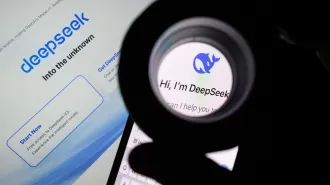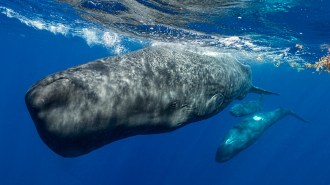- More than 2 years ago
Scientists have fabricated micrometer-size silicon mirrors, or “smart dust,” that can swarm and stick to a target–conceivably, contaminants in drinking water or a cancer cell–and then relay information about that target to the outside world.

To make the mirrors, researchers at the University of California, San Diego etched each side of a silicon chip so that one side appeared green and the other red. They also coated the red side with a hydrophilic (water seeking) chemical and oxidized the green side, making it water avoiding, or hydrophobic. Applying ultrasound shattered the silicon chip into micrometer-size particles.
In an upcoming Proceedings of the National Academy of Sciences, the researchers report adding the particles to a vial of water tainted with a drop of oil. The particles clustered around the oil with their hydrophobic sides facing the oil and their hydrophilic sides facing out. As a result, the oil drop glittered red, “sort of like a disco ball,” says UC–San Diego’s Michael Sailor. Some of the oil seeped into the porous mirrors. That changed the pattern of light reflected. Since different substances have the potential to yield different optical signatures in this technique, micromirror swarms could have the smarts to discern many targets.
****************
If you have a comment on this article that you would like considered for publication in Science News, send it to editors@sciencenews.org. Please include your name and location.





